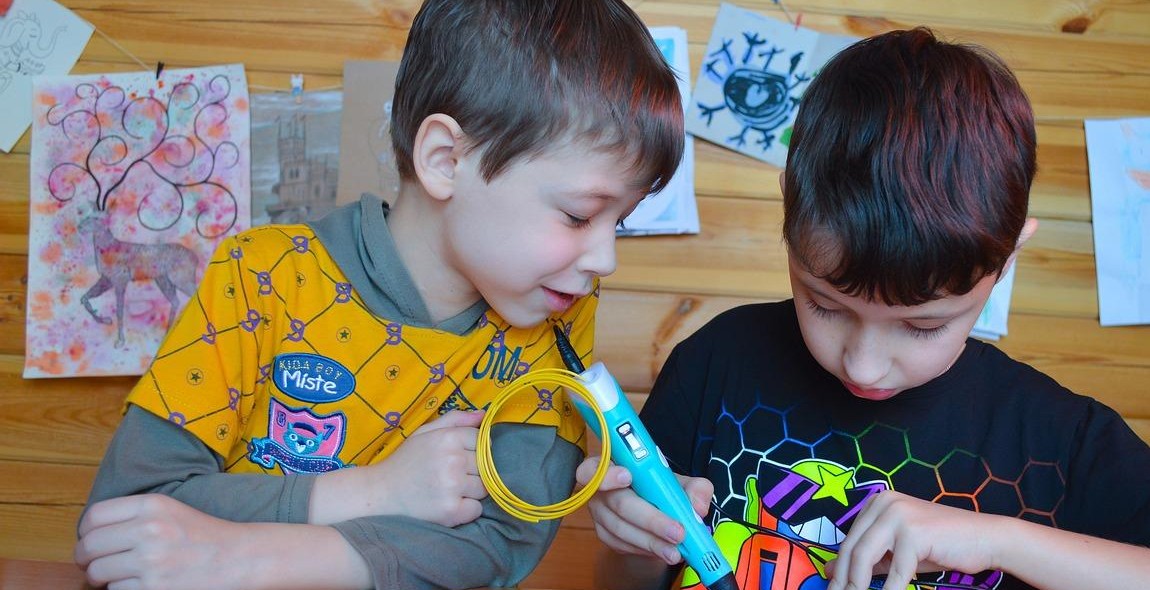The Relationship Between Meditation and Creativity in Children
As parents and educators, we are always looking for ways to help our children grow and develop into well-rounded individuals. One area that has been gaining popularity in recent years is meditation. While traditionally seen as a practice for adults, meditation is now being recognized as a valuable tool for children as well.
Research has shown that meditation can have a positive impact on a child’s creativity. By calming the mind and reducing stress, meditation can help children tap into their imagination and think more creatively. It also helps to improve focus and concentration, which are important skills for any creative endeavor.
There are many different types of meditation that can be adapted for children, including guided visualization, mindful breathing, and loving-kindness meditation. When taught in a fun and engaging way, meditation can become a regular part of a child’s routine, helping them to develop a sense of inner peace and creativity that will benefit them throughout their lives.
The Benefits of Meditation for Children’s Creativity
Studies have shown that regular meditation practice can have a number of benefits for children’s creativity, including:
- Reducing stress and anxiety
- Improving focus and concentration
- Stimulating the imagination
- Increasing self-awareness
- Boosting confidence and self-esteem
These benefits can help children to approach creative tasks with more confidence and enthusiasm, leading to more innovative and original ideas.

What is Meditation?
Meditation is a practice that has been around for thousands of years. It involves training the mind to focus and achieve a state of relaxation and inner peace. Meditation is often used as a tool to reduce stress and anxiety, but it can also have a range of other benefits.
Types of Meditation
There are many different types of meditation, each with its own unique approach and benefits. Some of the most popular types of meditation include:
- Mindfulness Meditation: This type of meditation involves paying attention to the present moment, without judgment. It can help to reduce stress and improve mental clarity.
- Transcendental Meditation: This type of meditation involves repeating a mantra to help the mind focus and achieve a deep state of relaxation. It can help to reduce stress and improve overall well-being.
- Loving-Kindness Meditation: This type of meditation involves focusing on feelings of love and kindness towards oneself and others. It can help to improve mood and reduce feelings of anger and resentment.
- Body Scan Meditation: This type of meditation involves focusing on different parts of the body and releasing tension. It can help to reduce physical symptoms of stress and improve overall relaxation.
Benefits of Meditation
Meditation has been shown to have a range of benefits for both the mind and body. Some of the most notable benefits include:
| Benefit | Description |
|---|---|
| Reduced Stress and Anxiety | Meditation can help to reduce levels of the stress hormone cortisol and improve feelings of calm and relaxation. |
| Improved Mental Clarity | Meditation can help to improve focus, concentration, and overall mental clarity. |
| Better Sleep | Meditation can help to improve sleep quality and reduce symptoms of insomnia. |
| Reduced Symptoms of Depression | Meditation can help to improve mood and reduce symptoms of depression. |
| Lower Blood Pressure | Meditation can help to lower blood pressure and reduce the risk of heart disease. |
Overall, meditation is a powerful tool that can have a range of benefits for both children and adults. By learning how to meditate, children can improve their creativity, reduce stress and anxiety, and improve their overall well-being.

Creativity in Children
Creativity can be defined as the ability to use imagination and original ideas to create something new. In children, creativity is an essential aspect of their development, as it helps them to express themselves, solve problems, and explore the world around them in unique ways.
Importance of Creativity in Children
Creativity is important in children for several reasons. Firstly, it helps them to develop critical thinking skills, as they learn to analyze problems and come up with innovative solutions. Secondly, it promotes self-expression, allowing children to communicate their thoughts and feelings in a way that is meaningful to them. Thirdly, creativity fosters a sense of independence and confidence, as children learn to trust their own ideas and abilities.
Moreover, research has shown that creativity is linked to academic success, as it enhances cognitive development and improves memory and attention span. It also helps children to develop social skills, as they learn to collaborate with others and work together towards a common goal.
Factors that Affect Creativity in Children
Several factors can affect a child’s creativity. Firstly, the environment in which they grow up can have a significant impact. Children who are exposed to a wide range of experiences and stimuli, such as books, music, and art, are more likely to develop their creative abilities than those who have limited exposure.
Secondly, parental attitudes towards creativity can also play a role. Children whose parents encourage and support their creative endeavors are more likely to develop their creative abilities than those whose parents do not value creativity.
Thirdly, the education system can also influence a child’s creativity. Schools that prioritize creativity and provide opportunities for children to explore and experiment are more likely to foster creativity than those that focus solely on academic achievement.
| Environmental Factors | Parental Attitudes | Education System |
|---|---|---|
| Exposure to a wide range of experiences and stimuli | Encouragement and support of creative endeavors | Schools that prioritize creativity and provide opportunities for exploration and experimentation |
| Access to resources such as books, music, and art supplies | Valuing creativity as an important skill | Schools that allow for flexibility and creativity in learning |
Overall, creativity is an essential aspect of a child’s development, and it is important to foster and encourage it. By providing children with a supportive and stimulating environment, valuing their creative endeavors, and promoting creativity in education, we can help them to develop their full creative potential.
The Relationship Between Meditation and Creativity in Children
Creativity is an essential skill that children need to develop to help them navigate their world and solve problems. Meditation is a practice that has been shown to enhance creativity in children.
How Meditation Enhances Creativity in Children
When children meditate, it helps to calm their minds and improve their ability to focus. This enhanced focus can help children to better understand their thoughts and emotions, allowing them to express themselves creatively. Meditation also helps to reduce stress and anxiety, which can be barriers to creativity.
In addition, meditation can improve children’s ability to think outside the box and come up with unique solutions to problems. This is because meditation helps to activate the prefrontal cortex, the part of the brain responsible for creativity and problem-solving.
Studies on the Relationship Between Meditation and Creativity in Children
Several studies have shown a positive relationship between meditation and creativity in children. One study published in the journal Frontiers in Psychology found that children who meditated regularly showed significant improvements in their creative thinking abilities. Another study published in the Journal of Creative Behavior found that meditation helped to increase children’s fluency, flexibility, and originality in their creative thinking.
Tips for Incorporating Meditation into Children’s Creative Activities
Here are some tips for parents and educators looking to incorporate meditation into their children’s creative activities:
- Start with short meditation sessions, gradually increasing the time as children become more comfortable with the practice.
- Encourage children to focus on their breath or a specific object to help them stay present during meditation.
- Combine meditation with other creative activities such as drawing or writing to help children express themselves creatively.
- Use guided meditations specifically designed for children to help them stay engaged and interested in the practice.
By incorporating meditation into children’s creative activities, parents and educators can help enhance their creativity and problem-solving skills, while also promoting their overall well-being.

Conclusion
In conclusion, the relationship between meditation and creativity in children is a complex one. While there is some evidence to suggest that meditation can enhance creativity in children, it is important to note that this relationship is not straightforward. Factors such as the type of meditation practiced, the length of practice, and the individual child’s personality and learning style can all play a role in determining whether or not meditation will have a positive impact on creativity.
That being said, there are many potential benefits to incorporating meditation into children’s lives. Not only can it help them develop a sense of calm and focus, but it can also improve their overall well-being and mental health. Additionally, by fostering a sense of creativity and imagination, meditation can help children develop a lifelong love of learning and exploration.
Ultimately, the decision to incorporate meditation into a child’s life is a personal one. However, by understanding the potential benefits and limitations of meditation, parents and educators can make informed decisions about how to best support children’s growth and development.
| Pros | Cons |
|---|---|
|
|
Overall, meditation can be a valuable tool for helping children develop their creativity and mental well-being. However, it is important to approach this practice with an open mind and a willingness to adapt to each child’s individual needs and learning style.
